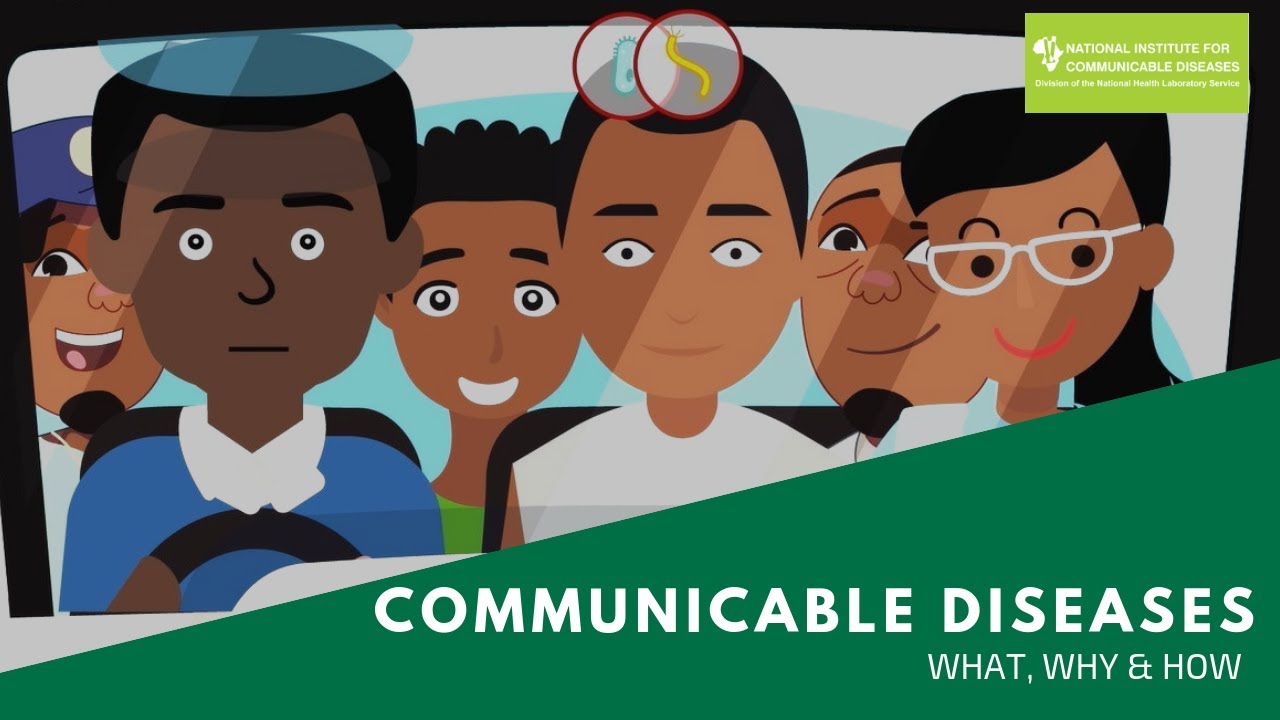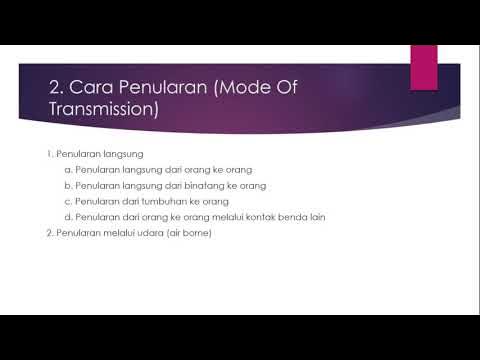The basics of controlling infectious diseases
Summary
TLDRThis video script delves into the transmission of infectious diseases through the epidemiological triad of agent, host, and environment, highlighting direct and indirect pathways. It emphasizes the importance of behavior change, vaccines, and medication in controlling diseases, while addressing challenges like antimicrobial resistance. Surveillance, environmental modifications, and infection control in healthcare settings are also discussed as critical strategies for disease management, with a nod to the one health concept that underscores the interconnectedness of human, animal, and environmental health.
Takeaways
- 🧬 The epidemiological Triad consists of the agent (pathogen), the host (person affected), and the environment (external conditions that facilitate transmission).
- 🤝 Transmission pathways for infectious diseases can be direct, like through contact or sexual intercourse, or indirect, such as through objects or vectors like mosquitoes.
- 🧼 Changing behavior is crucial for controlling the spread of infectious diseases, including practicing good hygiene, using condoms, and adopting a healthy diet.
- 💉 Vaccines are a cornerstone of public health, leading to significant reductions in diseases like measles and diphtheria, and contributing to herd immunity.
- 💊 Medications play a vital role in managing infectious diseases by killing or inhibiting the replication of microorganisms, and can also be used for prophylaxis.
- 🛡 Antimicrobial resistance is a growing concern, resulting from the overuse or misuse of antimicrobial drugs, and poses a significant challenge in disease control.
- 🔍 Surveillance is essential for monitoring disease trends, detecting outbreaks, and guiding the development and evaluation of disease control programs.
- 🚑 Notifiable diseases are legally required to be reported, allowing health departments to monitor and respond to potential outbreaks.
- 🌳 Modifying the environment can control infectious diseases by controlling vectors, ensuring safe water supply, and improving sanitation and hygiene.
- 🏥 In healthcare settings, infection control is vital to prevent the rapid spread of infections through sterilization, personal protective equipment, and strict hygiene practices.
- 🌐 The One Health concept emphasizes the interconnectedness of human, animal, and environmental health, highlighting the need for a multidisciplinary approach to infectious disease control.
Q & A
What are the three main components of the epidemiological triad that are necessary for an infectious disease to occur?
-The three main components of the epidemiological triad are the agent (the organism that causes the disease, such as bacteria, viruses, parasites, or fungi), the host (the target of the disease), and the environment (the surroundings and conditions that allow the disease to be transmitted).
What is direct transmission and how does it occur?
-Direct transmission is the transfer of an infectious organism directly to a person. This can happen through touching, sexual intercourse, coughing, or sneezing.
Can you explain indirect transmission and provide examples of how it can occur?
-Indirect transmission occurs when the infectious organism is transmitted via an intermediate. This can happen through contaminated objects like toys or soiled clothes, or through food or water. It can also involve an intermediate vector, such as a mosquito or a tick.
How can changing behavior help in controlling the spread of infectious diseases?
-Changing behavior can reduce or eliminate the risk of exposure to an infectious agent. Health behaviors such as using condoms to prevent sexually transmitted diseases, regular handwashing, maintaining a healthy diet, and using insect repellant can all contribute to disease control.
What is the significance of vaccines in public health and how do they contribute to disease control?
-Vaccines are one of the biggest successes in public health, leading to reductions and in some cases, eradication of infectious diseases. They protect individuals and, by increasing immunity in the community, contribute to herd immunity, which protects others as well.
What is antimicrobial resistance and how does it become a significant issue?
-Antimicrobial resistance occurs when microorganisms develop resistance to drugs that were once effective against them. It has become a significant issue due to the inappropriate or excessive use of antimicrobial drugs.
How does surveillance play a role in controlling infectious diseases?
-Surveillance is used to monitor diseases and their trends, characterize patterns of disease, and detect outbreaks. It can guide the prioritization, development, and evaluation of disease control programs and is essential for the management of notifiable diseases.
What are some environmental measures that can help control infectious diseases?
-Environmental measures include vector control to prevent diseases like malaria and dengue, ensuring a safe water supply to reduce waterborne diseases, improving sanitation and hygiene to reduce the spread of certain diseases, and enhancing housing and working conditions.
Why is infection control in healthcare facilities important and what are some ways to prevent the spread of infection?
-Infection control in healthcare facilities is crucial because infections can spread rapidly in these settings. Prevention methods include proper sterilization of equipment, wearing personal protective equipment, isolating infectious patients, strict handwashing practices, regular cleaning, and maintaining a good hospital surveillance system.
What is the 'One Health' concept and how does it relate to controlling infectious diseases?
-The 'One Health' concept recognizes the interconnectedness of human, animal, and environmental health. It emphasizes that successful control of infectious diseases requires cooperation and collaboration across various specialties, including veterinary and environmental sciences.
What are some broader measures that contribute to the control of infectious diseases beyond individual and environmental actions?
-Broader measures include improving social determinants of health such as education and employment, having strong healthcare systems, and an effective health workforce. These measures support overall public health and contribute to the control of infectious diseases.
Outlines

هذا القسم متوفر فقط للمشتركين. يرجى الترقية للوصول إلى هذه الميزة.
قم بالترقية الآنMindmap

هذا القسم متوفر فقط للمشتركين. يرجى الترقية للوصول إلى هذه الميزة.
قم بالترقية الآنKeywords

هذا القسم متوفر فقط للمشتركين. يرجى الترقية للوصول إلى هذه الميزة.
قم بالترقية الآنHighlights

هذا القسم متوفر فقط للمشتركين. يرجى الترقية للوصول إلى هذه الميزة.
قم بالترقية الآنTranscripts

هذا القسم متوفر فقط للمشتركين. يرجى الترقية للوصول إلى هذه الميزة.
قم بالترقية الآنتصفح المزيد من مقاطع الفيديو ذات الصلة

Konsep Penyebab Penyakit

COMMUNICABLE DISEASES | What? Why? How?

Neurology | Basal Ganglia Anatomy & Function | Direct & Indirect Pathways

CDC NERD Academy Student Quick Learn: How does disease spread?

História Natural das Doenças (Leavell e Clark) | Epidemiologia (Profa. Juliana Mello)

Mekanisme Penularan Penyakit dari Orang ke Orang
5.0 / 5 (0 votes)
